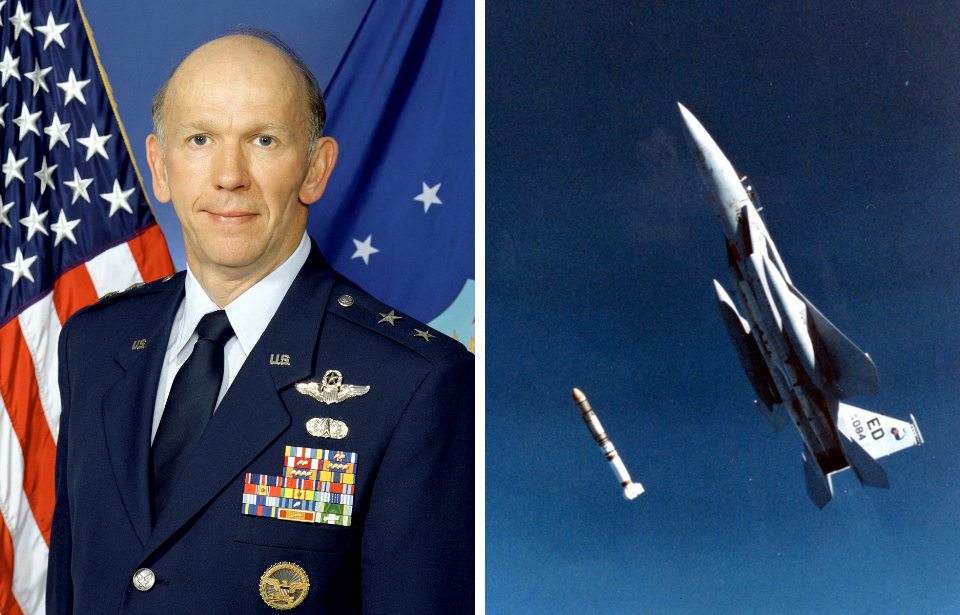On September 13, 1985, the US Air Force made history. On this day, the first air-to-space missile was launched, successfully destroying an orbiting satellite. Powerful in the context of the US-Soviet “Space Race,” this remarkable accomplishment gave America the upper hand against the Soviet Union and made pilot Wilbert “Doug” Pearson the first ever “ace” to land an outer-space bullseye.
The Space Race created fears of nuclear-armed satellites
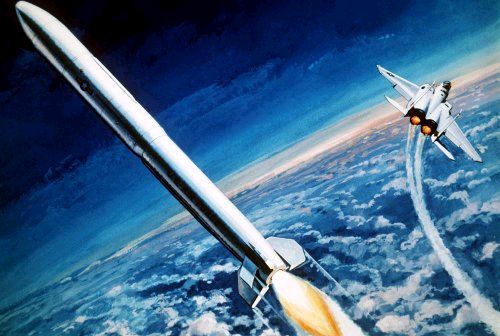
During the Space Race, the Soviet Union developed a robust program capable of placing very small reconnaissance satellites into orbit, to keep track of the whereabouts of US military forces. Despite America being ahead of the Soviets in terms of defense, the country’s government was intimidated by these small satellites, as they nearly completely destroyed the element of surprise when it came to military attacks.
Fears that the Soviet Union would soon place nuclear-armed satellites into orbit caused the US government to begin its own program targeted at destroying Soviet satellites. These fears arose as early as the launch of Sputnik 1 in October 1957, but it would take several decades before an adequate plan was put in place, though many attempts were made.
The need for an anti-satellite (ASAT) weapons program
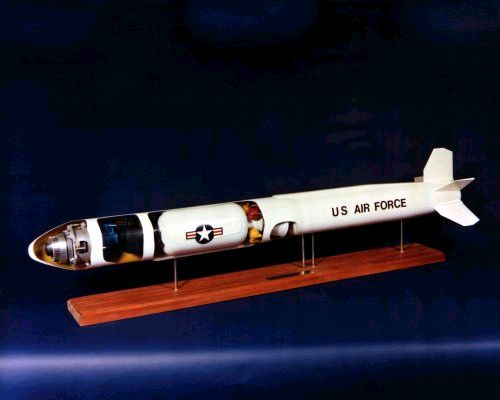
The US began the Anti-Satellite (ASAT) Mission Development and Test Program as a means to counter potential Soviet nuclear-armed satellites. The Soviet Union shared this fear, but more so because its government believed America might win the arms race. Thus both nations began developing their programs at the same time.
As this was the Space Race, the ASAT program needed to be developed relatively quickly. “Our program was challenged to develop a dynamic weapon system that could respond rapidly, accurately, and with flexible targeting capability. That led us to an air-launched weapon,” recalled Wilbert Pearson, who later scored the world’s first air-to-space kill.
Development of the program began in 1982 and the test flight took place three years later, in 1985.
Details of Wilbert Pearson’s historic flight
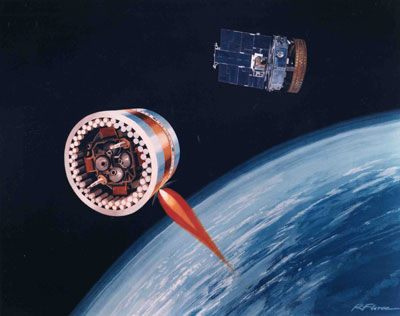
Wilbert Pearson made the historic flight, for which he became an “ace.” Flying the McDonnell Douglas F-15A Celestial Eagle, he began the flight to test the ASM-135 ASAT. Taking off from Edwards Air Force Base, California, Pearson made his way toward the satellite chosen for destruction: P78-1, AKA Solwind.
The P78-1 (Solwind) satellite was launched on February 24, 1979. After a number of years in orbit, its batteries were depleting. By the time of Pearson’s historic flight, it was commissioned to be terminated and selected as the target of the ASAT test.
Prior to the test, two preliminary ones were made to ensure an air-to-space kill was possible. The first was to ensure the missile could separate from the jet and reach the required altitude, while the second was aimed at a star to test its targeting capability.
The benefits of the McDonnell Douglas F-15A Eagle
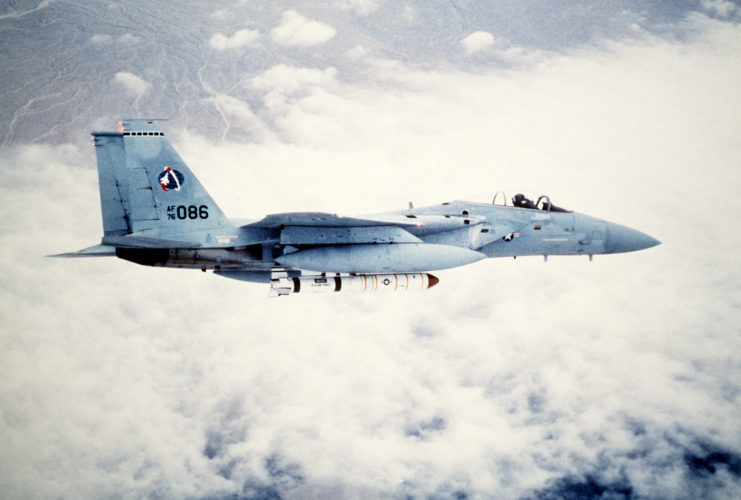
Choosing the right aircraft was critical for this time-sensitive mission. It ultimately came down to the F-15 Eagle. “The F-15 was a real racehorse,” explained Pearson. “We could fly supersonic and we could maneuver it to be in the right kind of a climb, and we could integrate all the required systems into the airplane to communicate with the missile. It could physically hold the ASAT weapon. It was a very large missile so it needed a big enough airplane.”
He further explained how “an F-16 didn’t have the ground clearance; you couldn’t put the missile on the centerline of the airplane and take off with it without hitting the ground. We could take operational F-15A airplanes and with fairly minimal modifications turn those into ASAT-killer airplanes.”
Wilbert Pearson makes the hit
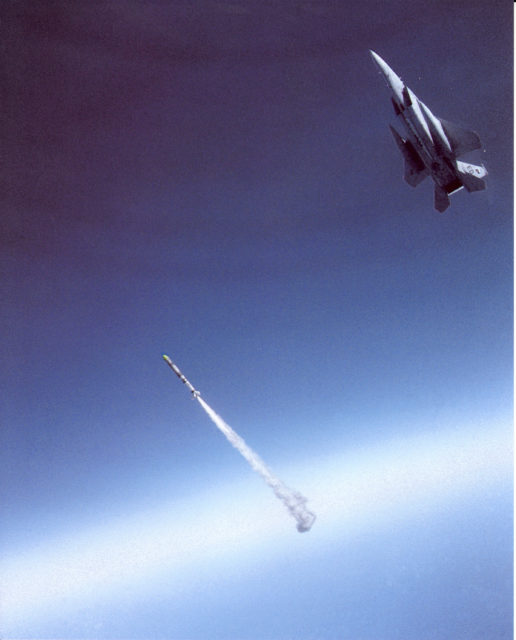
After takeoff, Wilbert Pearson took three hours to climb to an altitude of 30,000 feet. He then lit his F-15A Eagle’s afterburners and accelerated to Mach 1.3, pulling the aircraft into a 60-degree climb before slowing to Mach .96 as the countdown to the missile launch began. Once the countdown was finished, he hit the “pickle button” and launched the ASM-135 ASAT toward the P78-1 (Solwind) satellite.
Pearson recalled how “it was just a beautiful sight to see the missile suspended there and the flame come out of the rocket motor. And then it took off like a bandit.” Unfortunately, he wasn’t able to see or know for himself if the missile had reached its target. Instead, he’d established a code with a control room operator that would let him know whether the test was successful.
When he called down to the control room, Pearson didn’t even need the code to know the missile had hit its target. When the mic turned on, all he could hear was screaming and hollering, signalling to him that the test had been a success. A satellite had been shot out of space by an aircraft for the first time in history.
The end of the ASAT program
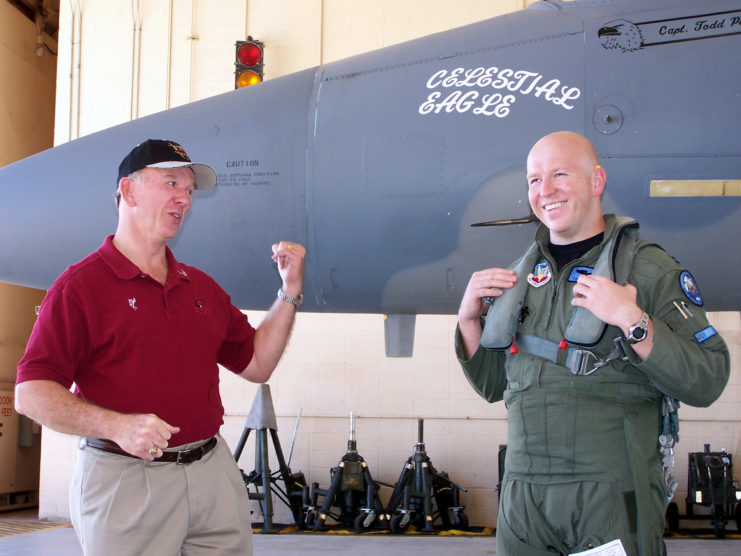
The test’s success had a very important outcome. The Soviet Union saw it as America’s ability to target satellites and destroy them in orbit. What the Soviets weren’t aware of, however, was the hard work that had gone into the program. For them, it’s likely the test seemed like a simple task for the US Air Force.
More from us: North American X-15: The Fastest Manned Rocket Aircraft Ever Developed
Want War History Online‘s content sent directly to your inbox? Sign up for our newsletter here!
The historic test caused 285 pieces of debris to the launched toward Earth, but it took almost 19 years for all of it to re-enter the atmosphere. The unreliability of debris from missile-satellite contact caused doubts in the program’s longevity. Unfortunately, the US Congress pulled funding, and House-Senate negotiators agreed to ban ASAT testing in return for chemical weapons production.
